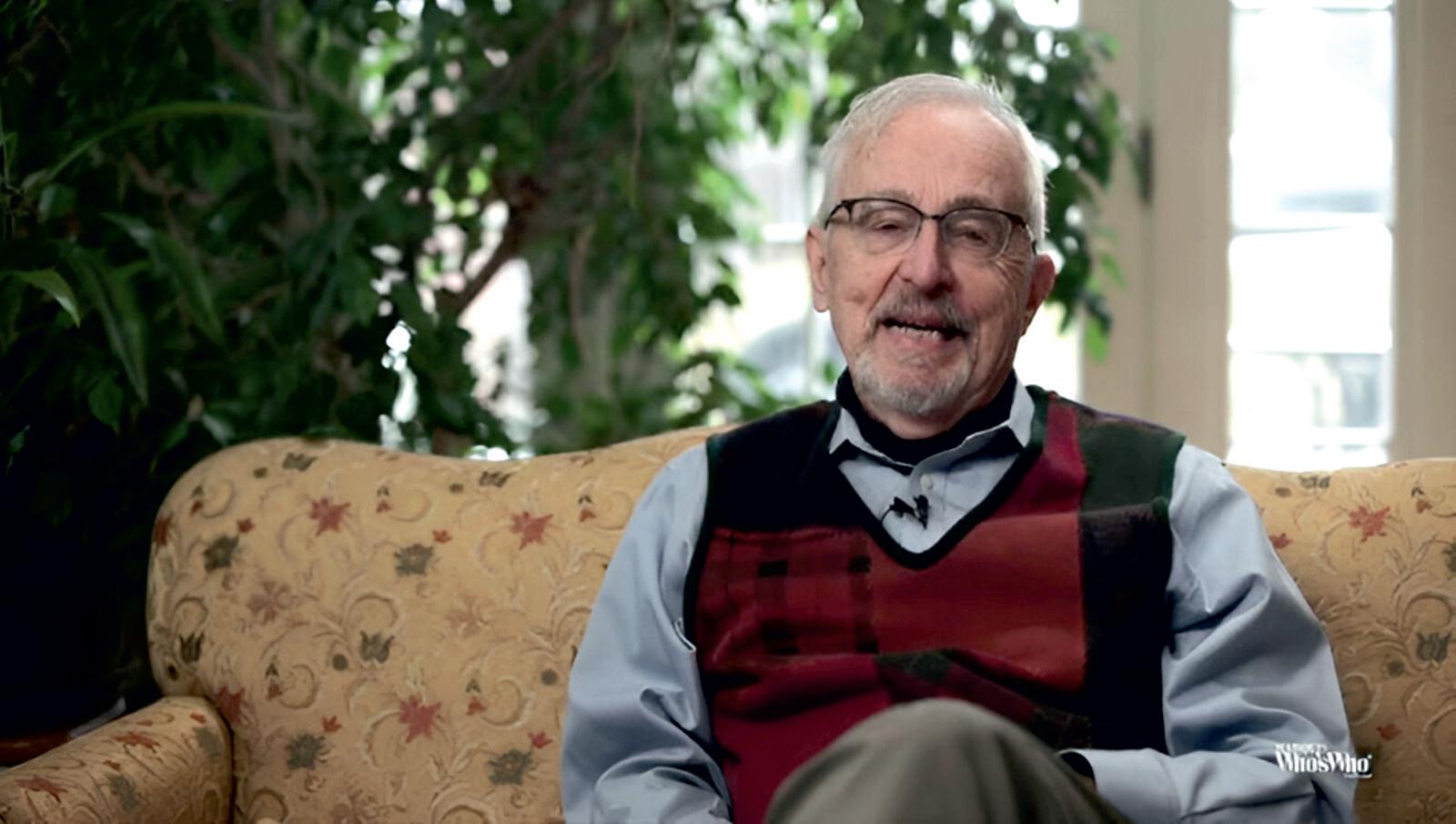














Visionaryeducationleadersholdapivotalroleinshapingthefuture
oflearning.Theyaremorethanadministratorsoracademics;they areinnovatorswhoredefinehowknowledgeisshared,applied,and expanded.Byblendingscholarshipwithcreativity,theyinspireinstitutions, educators,andstudentstotranscendconventionalboundaries.Theirimpact extendsbeyondclassroomsintocommunities,fosteringcriticalthinking, inclusivity,andlifelonglearning.Theseleadersembodytheconvictionthat educationisthemostpowerfuldriverofpersonalgrowth,socialprogress, andglobaltransformation.Amongthem,Prof.RichardLarsonstandsout forhisgroundbreakingcontributionsinoperationsresearchandhis innovativeapproachtoadvancingeducation.
EnterpriseReviewinitsrecenteditiontitledRichardC.Larson:Top VisionaryEducationalLeaderoftheDecaderecognizesProf.Richard Larsonforhisoutstandingcontributions.Withadistinguishedcareerin research,academia,andinnovation,Larsonhasadvancedthefrontiersof knowledgewhileinspiringgenerationsofstudentsandpeers.Hispioneering workinqueueingtheory,operationsresearch,anddecisionsciencehas influencedboththeoryandpractice,leavingalastingglobalimpact.Beyond

scholarship,heviewseducationasatransformativeforcethatextends wellbeyondclassroomsintoeverydaylife.Hisjourneyhasalsobeen deeplyshapedbytheunwaveringsupportofhislatewife,Mary ElizabethMurray(“Liz”),whosepartnershipstrengthenedtheirshared missionofexpandingaccesstoqualityeducation.
Together,theyadvancedinitiativessuchasMITBLOSSOMS, expandingaccesstolearningresourcesworldwide.ForLarson, teachingwasneverlimitedtodeliveringinformation;itfocusedon mentoring,nurturingcriticalthinking,andshapingfutureinnovators. Eveninretirement,hispassioncontinuesthroughhisbookMODEL THINKINGforEverydayLife,whichsimplifiescomplexideasand equipsindividualswithpracticaldecision-makingtools.Hislifelong dedicationreflectshiscorebeliefthateducationisnotmerelyastagein lifebutacontinuousjourneythatenrichesbothindividualsandsociety
Haveagreatreadahead!

08.
T H E S I G N AT U R E S TO R Y

The Lifelong Pursuit of Knowledge –Richard Larson’s Journey in Research, Education, and Innovation
I N D U S T R Y I N S I G H T S
20.
Mobilizing Teams: Cultivating Visionary Leadership for Lasting Impact
22.
Shaping Concepts: The Power of Visionary Leadership in Organizations
Editor-in-Chief
Merry D' Souza
CONTENT
Managing Editor Bill Limbert
Assisting Editor Joe Lee


www.twitter.com/enterprisereview.com/ www.facebook.com/enterprisereview.com/
WE ARE ALSO AVAILABLE ON

Visualizer Stewart Jonas
Art & Design Director Robin Clarck
Associate Designer Authur Watson DESIGN
SALES
Vice President Jil Kendal
Asst. Vice President Kevin Johnson
Asst. Manager Robert Hanson
Business Development Executive Thomas E.

Email sales@enterprisereview com For Subscription www.enterprisereviewmedia.com
Technical Head Andrea Jackson
Technical Specialist Mike Anderson
Technical Consultant Oliver Sutton TECHNICAL
SME-SMO
Research Analyst Wendy J.
SEO Lead Tasha L.
September, 2025
Copyright © 2025 enterprisereview, All rights reserved. The content and images used in this magazine should not be reproduced or transmitted in any form or by any means, electronic, mechanical, photocopying, recording or otherwise, without prior permission from enterprisereview. Reprint rights remain solely with enterprisereview.
























In today's rapidly evolving business landscape, the distinction between conventional management and visionaryleadershiphasneverbeenmorecritical.While traditional management focuses on maintaining existing systems and processes, visionary leadership transcends operational boundaries to create transformative change that resonates far beyond immediate organizational goals. The abilitytocultivatevisionaryleadershiprepresentsoneofthe most valuable investments an organization can make, as it directly correlates with sustained competitive advantage, innovationcapacity,andlong-termorganizationalresilience. Visionary leaders possess the unique ability to see beyond current constraints and limitations, envisioning possibilities that others might dismiss as unrealistic or unattainable.This forward-thinking approach enables them to guide their organizations through uncertainty and complexity while
maintaining clarity of purpose and direction The development of such leadership capabilities requires intentional cultivation, combining strategic thinking with emotional intelligence, communication excellence, and an unwavering commitment to continuous learning and adaptation.
Thefoundationofvisionaryleadershiprestsupontheability to anticipate future trends, challenges, and opportunities before they become apparent to others This strategic foresight involves systematic analysis of market dynamics, technological developments, social changes, and economic patterns that could impact organizational success. Effective visionary leaders invest considerable time in scanning the

external environment, engaging with diverse perspectives, and synthesizing complex information to identify emerging patterns and potential disruptions. They understand that the future is not a fixed destination but rather a series of possibilities that can be influenced through deliberate action andstrategicpositioning.
Building this capability requires leaders to develop comfort with ambiguity and uncertainty while maintaining decisionmaking effectiveness under incomplete information. Visionaryleaderscultivatenetworksofdiverserelationships thatprovideaccesstodifferentviewpointsandearlysignalsof change.Theyalsoengageinscenarioplanningexercisesthat help them prepare for multiple potential futures rather than betting everything on a single predicted outcome This approachenablesthemtoremainagileandresponsivewhile maintaining strategic coherence, positioning their organizations to capitalize on opportunities and navigate challengesthatothersfailtoanticipate.
The most brilliant vision remains ineffective without the ability to communicate it compellingly and inspire others to embraceandactuponit.Visionaryleadersexcelattranslating complex, abstract concepts into accessible narratives that resonate with diverse stakeholders. They understand that different audiences require different approaches and tailor their communication strategies accordingly, whether addressing board members, employees, customers, or community partners. This communication mastery extends beyond public speaking to encompass written communication, digital engagement, and one-on-one relationship building that creates authentic connections and buildstrustovertime.
Transformational influence operates through inspiration ratherthancoercion,appealingtopeople'shigheraspirations and connecting individual contributions to meaningful outcomes. Visionary leaders create compelling stories that help others understand their role in achieving the broader vision while providing clear pathways for participation and contribution They recognize that sustainable influence requires consistency between words and actions, demonstrating personal commitment to the vision through their own behavior and decisions. This authenticity builds credibility and encourages others to take ownership of the vision, creating a multiplier effect that extends the leader's impact far beyond what they could achieve through direct interventionalone.
While vision provides direction and inspiration, lasting impact requires the development of organizational systems and capabilities that can execute on visionary goals consistently over time. This involves designing structures, processes, and cultural norms that support innovation, encourage calculated risk-taking, and maintain alignment with long-term objectives even as short-term pressures emerge. Visionary leaders understand that organizational transformationisnotaone-timeeventbutanongoingprocess thatrequirescontinuousattentionandrefinement.Theyinvest indevelopingotherleadersthroughouttheorganizationwho can carry the vision forward and adapt it to changing circumstances.
Sustainable execution also requires the establishment of measurement systems that track progress toward visionary goals while maintaining operational excellence in current activities.Thisbalancebetweenexplorationandexploitation represents one of the most challenging aspects of visionary leadership, requiring careful allocation of resources and attention across competing priorities. Successful visionary leaders create feedback loops that enable rapid learning and course correction while maintaining commitment to core strategicdirection.Theyalsofosterculturesofpsychological safety that encourage experimentation and learning from failure, recognizing that breakthrough innovations often emerge from iterative processes that include both successes andsetbacks.
Thejourneytowardcultivatingvisionaryleadershiprequires deliberate commitment to developing capabilities that transcendtraditionalmanagementapproaches.Organizations thatinvestinbuildingtheseleadershipcompetenciesposition themselvesnotmerelytorespondtochangebuttoshapethe future landscape of their industries. The integration of strategic foresight, transformational communication, and sustainableexecutionsystemscreatesapowerfulframework forgeneratinglastingimpactthatextendsbeyondimmediate businessresults.Aswelooktowardanincreasinglycomplex and interconnected global environment, the demand for visionary leadership will only intensify Those leaders who embrace this challenge and commit to continuous development of their visionary capabilities will find themselvesuniquelypositionedtocreatemeaningfulchange, inspire others to achieve their highest potential, and build organizationsthatthriveacrossmultiplegenerations.

In today's rapidly evolving business landscape, organizations face unprecedented challenges that demand more than conventional management approaches The ability to navigate uncertainty, inspire transformation,andguideteamstowardambitiousgoalshas becomeessentialforsustainedsuccess.Visionaryleadership emerges as a critical competency that distinguishes thriving organizations from those that merely survive, offering a strategic advantage in an increasingly competitive marketplace.Visionaryleaderspossesstheuniquecapacityto see beyond immediate circumstances and articulate compelling futures that resonate with stakeholders at all levels. They create organizational cultures that embrace innovation,fostercollaboration,andmaintainfocusonlongterm objectives while addressing short-term pressures. This leadershipstyletranscendstraditionalcommand-and-control
structures, instead cultivating environments where employees feel empowered to contribute meaningfully to sharedaspirationsandorganizationaltransformation.
Visionaryleadershiprepresentsaforward-thinkingapproach that combines strategic foresight with inspirational communication to guide organizations toward ambitious goals These leaders demonstrate exceptional ability to synthesize complex information, identify emerging trends, andtranslateabstractconceptsintoactionablestrategiesthat teams can understand and embrace. They possess a unique talent for seeing possibilities that others might overlook and communicating these opportunities in ways that generate enthusiasm and commitment throughout the organization.

Thefundamentalcharacteristicsofvisionaryleadersinclude emotional intelligence, strategic thinking, and authentic communication skills that enable them to connect with diverse audiences. They exhibit resilience in the face of setbacks, maintaining optimism while acknowledging challengeshonestlyandtransparently
Theseleadersalsodemonstrateadaptability,recognizingthat their initial vision may require refinement as circumstances change, and they remain open to feedback and new informationthatcouldenhancetheirstrategicdirection.What sets visionary leaders apart is their ability to balance seeminglycontradictoryqualities:theyarebothdreamersand pragmatists, idealistic yet grounded in reality They understand that vision without execution is merely wishful thinking, while execution without vision lacks the inspirationalpowertodrivemeaningfulchange.Thisbalance allows them to set ambitious goals while maintaining credibility through realistic planning and measurable progress.
Organizations led by visionary leaders consistently outperform their competitors across multiple metrics, including employee engagement, innovation rates, and financial performance. Research indicates that companies with strong visionary leadership experience higher levels of employee retention, as team members feel connected to meaningful purposes that extend beyond individual job responsibilities. This connection translates into increased productivity, creativity, and willingness to invest discretionaryeffortinachievingorganizationalobjectives.
The strategic impact extends beyond internal operations to externalrelationshipswithcustomers,partners,andinvestors who are drawn to organizations with clear direction and compelling narratives. Visionary leaders create competitive advantages by anticipating market shifts, identifying new opportunities, and positioning their organizations to capitalize on emerging trends before competitors recognize their significance. They also build organizational resilience by fostering cultures that embrace change as an opportunity rather than a threat, enabling rapid adaptation to evolving marketconditions.
Successful implementation of visionary leadership requires deliberate development of specific practices and organizational systems that support long-term thinking and
strategic alignment. Leaders must establish regular communication channels that reinforce the organizational vision while providing updates on progress toward strategic objectives This includes creating forums for dialogue, feedback, and collaborative problem-solving that engage employeesatalllevelsinthevisionrealizationprocess.These communication mechanisms serve as vital touchpoints that maintainmomentumandensureconsistentmessagedelivery across diverse organizational functions and hierarchical levels.
Effectivevisionaryleadersalsoinvestheavilyinstorytelling, usingnarrativetechniquestomakeabstractconceptstangible and memorable. They understand that humans are wired to respondtostories,andtheyleveragethispsychologicaltruth to embed their vision deeply into organizational culture. These stories often include examples of how the vision manifests in daily operations, customer interactions, and strategic decisions Additionally, they create recurring narratives that celebrate progress milestones, acknowledge setbacksaslearningopportunities,andreinforcecorevalues throughreal-worldapplicationsthatresonatewithemployees' personal experiences The sustainability of visionary leadership depends on building organizational capabilities that extend beyond individual leaders to embed forwardthinkingpracticesthroughoutthecompanyculture.
Visionary leadership represents more than an aspirational ideal; it constitutes a practical necessity for organizations seeking to thrive in complex, dynamic environments. The evidenceoverwhelminglydemonstratesthatleaderswhocan articulate compelling futures and inspire others to work toward shared goals create significant value for all stakeholders.Asbusinessenvironmentscontinuetoevolveat acceleratingpace,thepowerofvisionaryleadershipwillonly become more critical for organizational success and sustainability. The transformative potential of visionary leadership extends far beyond immediate operational improvements, creating ripple effects that influence organizational culture, market positioning, and long-term viability Organizations that invest in developing visionary leadership capabilities position themselves not merely to respondtochangebuttoshapethefutureoftheirindustries. By embracing the principles and practices outlined in this analysis, leaders can harness the full power of visionary leadership to drive meaningful transformation and achieve sustained competitiveadvantagein an increasinglycomplex businesslandscape.





www.enterprisereviewmedia.com
